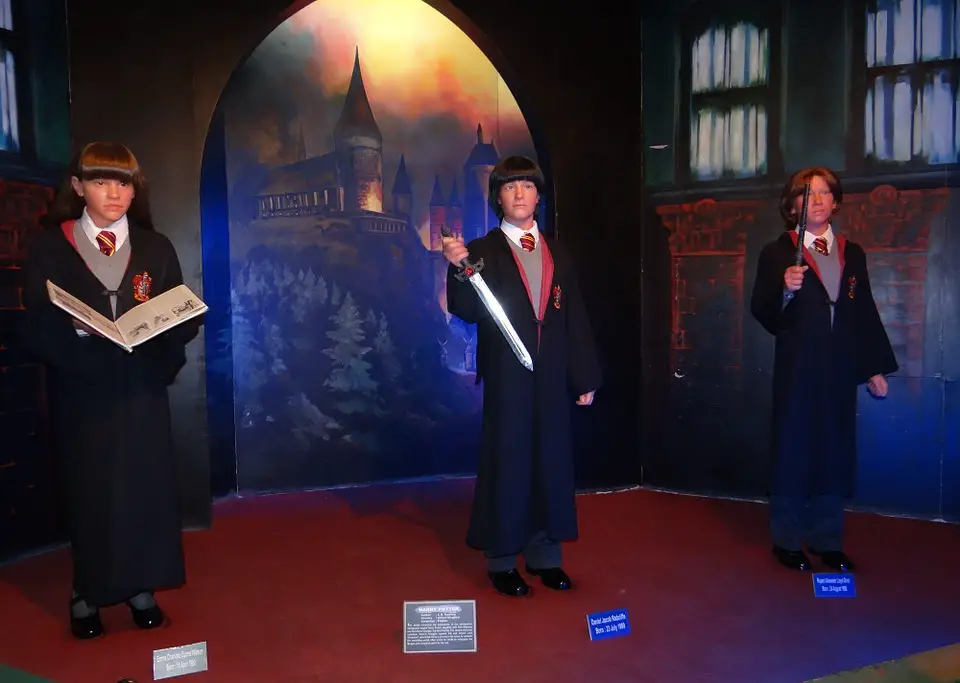WHAT IS A TABLEAU?
Tableau is a group of silent, motionless figures used to represent a scene, theme, idea, or an important moment in a narrative.
Here participants make still images with their bodies to represent a scene or to communicate one specific message.
Tableau can also be described as a frozen movement in time.
In art, tableaus can be seen in the theater when a stage picture shows silent, still, costumed actors in poses.
In dance concerts, dancers remain motionless for a moment to create a still picture in contrast to movement.
In films or community performances, a group of actors might imitate a famous painting, biblical or historical scene.
A tableau is also used to establish a scene that involves a large number of characters. It can also be used to explore a specific moment in a drama or to replicate a photograph or an illustration for a deeper analysis
Tableau has many features, some of the important ones are :
- Character
- Space
- Gesture
- Facial expression
- Level
Tableau is used for deciphering meaning as well.
WHAT IS THE DIFFERENCE BETWEEN TABLEAU AND TABLEAUX?
Tableau is singular form meaning, when there is just one.
Whereas tableaux is plural form meaning, when there are several of them.
WHAT ARE TRANSITIONS?
Transitions are the spaces between each individual tableau.
TYPES OF TABLEAUX
Singular Tableau – Portrays an idea, concept, message, emotion, etc…
Silent Story Tableaux – Tells a story without using spoken dialogue.
Narrative Tableaux – A narrator tells a story that is represented in the tableaux.
Moving Tableaux – Movement or moving transitions are used to link the tableaux together.
BENEFITS OF TABLEAU
- Shy participants are more comfortable.
- Is seen as a tool for summarization.
- Improves creativity in mind.
- Links past experiences with the text.
- Helpful for kids with language difficulties.
ELEMENTS OF TABLEAU CHECKLIST STATUE
Individual facial expression and body shape/gesture
- Use whole face and body
- Show character
- Show action
- Show emotion (face)
Levels and depth
- Low/medium/high
- Three dimensional use of stage or playing space : Left/right/center, downstage/upstage, near/far
Character and spatial relationships/connections
- Eye contact or point of focus
- Physical contact(touching or not touching) using positive or negative space
- Proximity or distance
Open to the audience
- Audience awareness
- Make sure all actors can be seen, use depth and levels
Make sure your tableaux has :
(USE ELEMENTS OF TABLEAU CHECKLIST)
- Statues – That is, specific facial expressions and body shapes to show characters and actions.
- A variety of levels and depth.
- Physical proximity (far/near) and/or contact to show relationships.
- All actors cheating out (staying open to the audience).
WHAT MAKES A GOOD TABLEAUX IN DRAMA?
A Tableaux that shows evidence of comprehension of text combined with strong acting skills is what makes a good tableaux in drama.
A good Tableaux exceeds mere silence and stillness.
Major parts of an effective tableau:
- Concentration – all members of a group should be focused on the moment. No physical movement or talking.
- Visual Balance– There should be an equal amount of action happening on both sides of the stage.
- Expectation –Make the scene more exciting and thrilling.
- Literal Balance– By working together, you are expected to have unity.
- Levels -help establish power in a scene.
- Lines – Horizontal and vertical lines seem grounded and still. Diagonal lines in tableau indicate movement. Having multiple levels and lines adds interest and variety to each tableau.
- Clarity– You need to make your tableau understandable
- Timing– A minimum of 8 seconds
- Training and Practice – rehearse everything
- Type- is it abstract, concrete ,symbolic ?, Identification is key
HOW DO YOU USE TABLEAUX?
1. Prompt
After reading a story, students are prompted to convey the meaning by creating a tableau and explain the framework of the activity.
2. Brainstorm
Students are advised to work in pairs or trios. Afterward, Students are expected to brainstorm ideas for their tableau and rehearsal.
3. Present
This is when students present their final freeze-frame product.
WHEN TO USE TABLEAU FOR TEACHERS
- To check students understandings
- To gain insight on how students are applying the different concepts
- To check if students can evaluate information
- To check if students can draw conclusions
- To create extensions for students who show great understanding and to formulate guided groups for students who do not demonstrate understanding
VARIATIONS
- Pictures can be digitally displayed. Eg. powerpoint
- Illustrations and action figures can be used instead of pictures
- Secret tableau topics are distributed. After the presentation , Participants should guess what has been presented and provide evidence as well.
- Conducting interviews after members freeze into their tableau.
Conclusion
Tableau is a group of silent, motionless figures used to represent a scene, theme, idea, or an important moment in a narrative.
A good Tableaux exceeds mere silence and stillness.
Leave a comment with your opinion or any questions you may have below…


